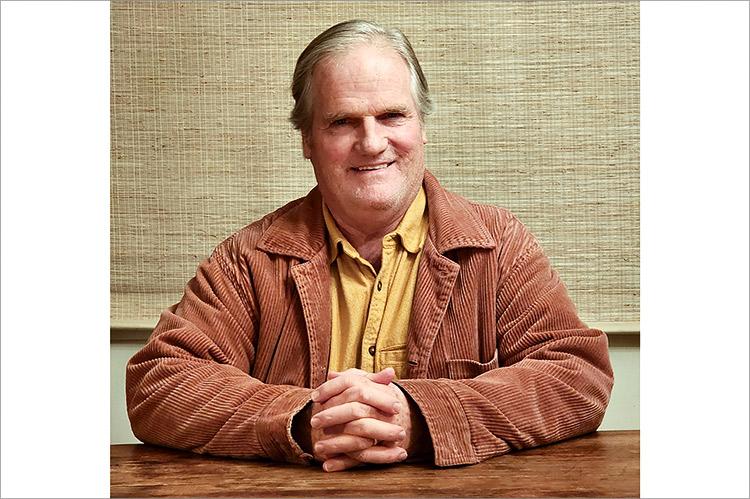Institutional knowledge, by nature, is rare. It must be attained over time, through good times and bad. Randy Parsons was first elected to the East Hampton Town Board in 1979, when the population of East Hampton was only 14,000; he will be leaving the planning board, on which he has served for the last seven years, on Dec. 31. He is retiring from town government entirely and, when he leaves, a great deal of institutional knowledge leaves with him.
In the last couple of years, at least, Mr. Parsons has often been a lone wolf on the board, either abstaining from votes or casting dissents.
“Maybe I have a contrarian personality,” he said in a recent phone call. “Usually I vote the way I feel, but I also feel sometimes like I have to pull, the board has to be pulled, further to the environmental side.”
“Randy’s work on the planning board has been unfailing, dedicated to the town’s natural resources, its physical beauty, and the character of the community,” Samuel Kramer, who has chaired the planning board since 2019, said in a phone call. At its Dec. 13 meeting, the planning board passed a “resolution of appreciation” for Mr. Parsons.
“He has an almost encyclopedic knowledge of the town code, and his inherent understanding of the long-term implications of the applications that come before the planning board is unsurpassed,” said Mr. Kramer. “While his views may not have always carried the day, his contributions were always invaluable. I have been privileged to work with and learn from Randy, and the board and I will miss having him at the table.”
Mr. Parsons, who is 71, first visited the area in the 1950s. His family spent 15 summers in a Wainscott cottage bought by an ancestor in 1915. In 1975, he inherited an aunt’s East Hampton house. Back then, East Hampton Town was still largely rural, and while fishing and farming had begun a slow decline, they were still the South Fork’s dominant industries. “It’s tipped to more of a bedroom community,” Mr. Parsons said. “One of the things I feel good about is we held onto a lot of our agricultural lands. We have young farmers and farm-to-table is doing really well, but the suburbanization, sadly, has had its way to a large extent.”
Mr. Parsons cites the community preservation fund, established by referendum in 1998, as the biggest game-changer during his tenure in government. The C.P.F.’s 2-percent transfer tax levied on real estate purchasers, originally for the protection of farmland, open space, and community character, was extended to protect water-quality improvement projects, as well, in 2016.
“Nonetheless, the area is still on the verge of overdevelopment,” he said. “We’re getting closer to buildout, and while it has been reduced dramatically, it’s still too much.”
“You’re always trying to balance property rights with the public interest. It’s a constant battle. The whole thing with clearing, having big lawns, is a no-no for a lot of reasons. If we keep the native vegetation and control the size of the buildings, you end up with a lot more of the natural landscape left and you end up with a scale that’s not so obnoxious.”
Mr. Parsons leaves just days after an unnamed storm eroded a large portion of the beach around downtown Montauk, once again leaving some hotels just feet from the water, with a steep drop to the sandbags installed by the United States Army Corps of Engineers in 2016, highlighting the importance of smart planning in the face of an imperiled future. “Sometimes the best thing you can do is gradually undo the mistakes that have been made — there’s some of that going on here,” he said. “The Town Board buys houses and takes them down in the wetlands.”
Despite the fragility of the South Fork environment, post-Covid 19, more people seem to be clamoring to build on the same shaky shores, and applications to the planning board and zoning board of appeals often request variances or natural resource special permits.
Part of the issue, as Mr. Parsons sees it, is that the economy is now driven by the real estate industry. “There has been an increase in the number of people who make their money in real estate. Combined with the money in building, there’s a lot of pressure for that to continue. If you allow market forces to decide what type of housing is built, all the remaining units are going to be second homes.”
He said local government, county, state, and federal help has to come together to support the creation of affordable housing. One might hope the Community Housing Fund, voted into law just last year, will eventually have a similar impact as the C.P.F. “You try to have this utopian existence, for all different types of people at different income levels, but it’s a struggle.”
He also leaves amid revived debate about amending the town code to reduce the scale and impact of development. He believes the code should change, but acknowledges it will be a difficult road. “It’s a great example of profit motive being pitted against community character and environmental health. But it takes a town board that is willing to get good legal advice and then fashion a code that can be well defended in court. Then the boards have to hold the line.”
Repurposing exhausted sand mines will be a big issue for the planning board in coming years, he said. Depending on how these huge swaths of compromised land are developed, the quality of life for nearby residents could be improved or diminished. Mr. Parsons believes the proposed Wainscott Commercial Center, on 70.4 acres at the western entrance to the town, and another sand pit on Three Mile Harbor Road, could be great places to install solar energy. “Whatever you’re putting in the ground is in the water table very quickly in those areas, and it moves. And we all know we’re choked with traffic. Anything that makes that situation worse and not better, to me, it’s to be avoided.”
Thinking of Wainscott and the traffic congestion, he believes the power lines that run north of Montauk Highway could be buried and open up an alternative transportation route for bicycles. “It’s an existing right of way that’s not utilized in a good way.”
Mr. Parson plans to continue living in East Hampton. “My wife has eight grandchildren, seven of whom live here,” he said. “My brother and sister live here.” He purchased some land in upstate New York that is protected by a conservation easement, and he will keep playing in his band, the Hyzer Hillbillies, up there. And he plans to continue to have his voice heard in public, too: Look for him in The Star’s letters to the editor.




